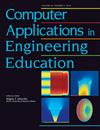Python-Powered Structural Analysis: Modeling and Solving 2D Truss Systems With the “Anastruct” Module
Abstract
This article presents an efficient approach for modeling and solving the planar trusses using the “anastruct” module which is a specialized Python library for analysing the structures. By using this existing tool, the procedure automates the tiresome manual calculations, thereby enabling precise determination of the axial forces within the truss members under various loading and boundary conditions. To evaluate the effectiveness of the module, five typical truss problems of increasing complexity were solved, demonstrating its applicability to both academic learning and practical engineering tasks. It has been observed that in all the cases the “anastruct” has given result which are precisely aggreging with the existing literature. A pilot study on 30 structural analysis students revealed the “anastruct” tool's visualization and calculation benefits, but highlighted a need for more stiffness matrix documentation. This study highlights the adaptability of Python for the structural analysis and provides a foundation for incorporating advanced functionalities like nonlinear behavior and dynamic analysis in future studies thus laying the groundwork for further advancements in structural modeling and analysis automation. The pedagogical importance of this tool has also been discussed which will offer an actionable insight for the educators and the people engaged in the development of the curriculum.

 求助内容:
求助内容: 应助结果提醒方式:
应助结果提醒方式:


